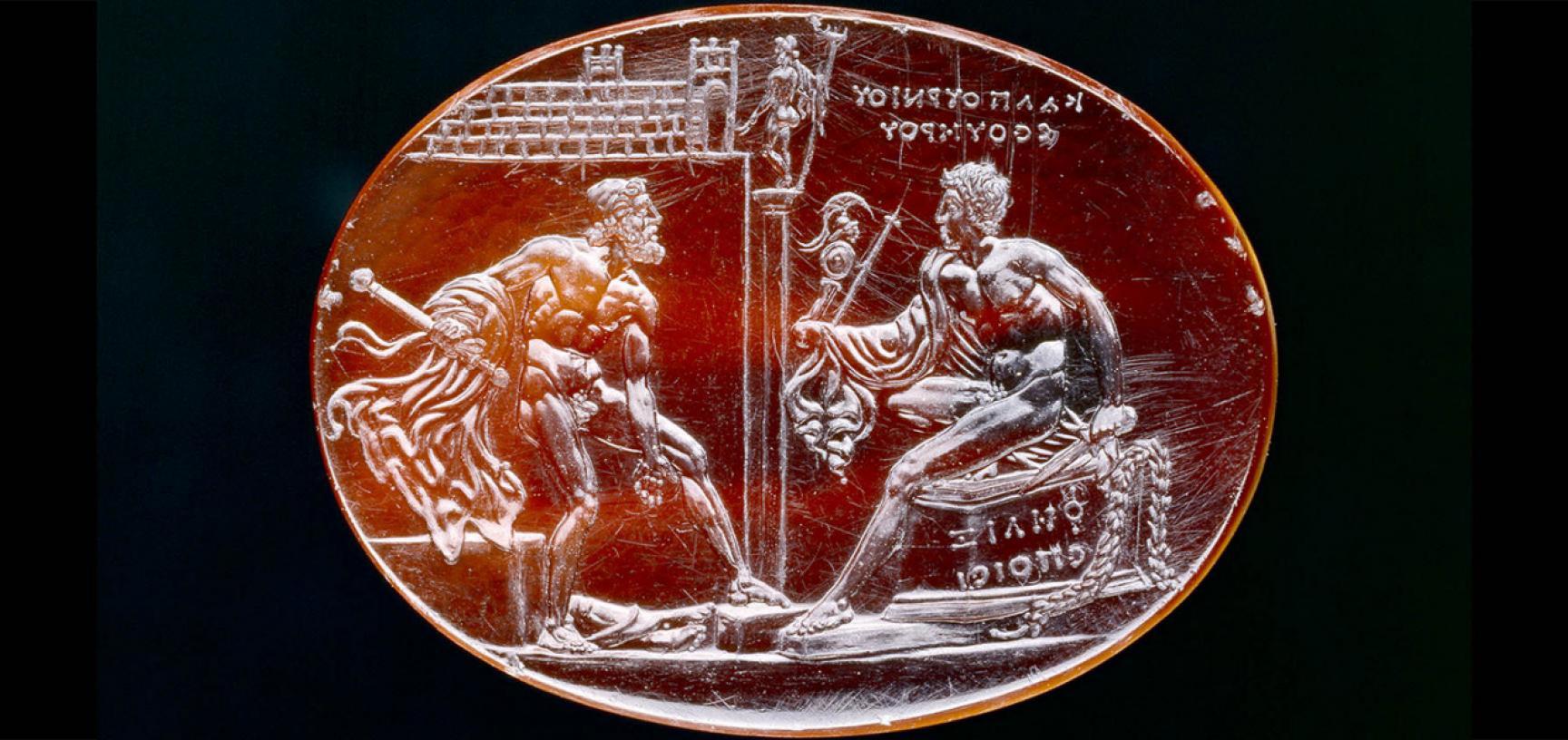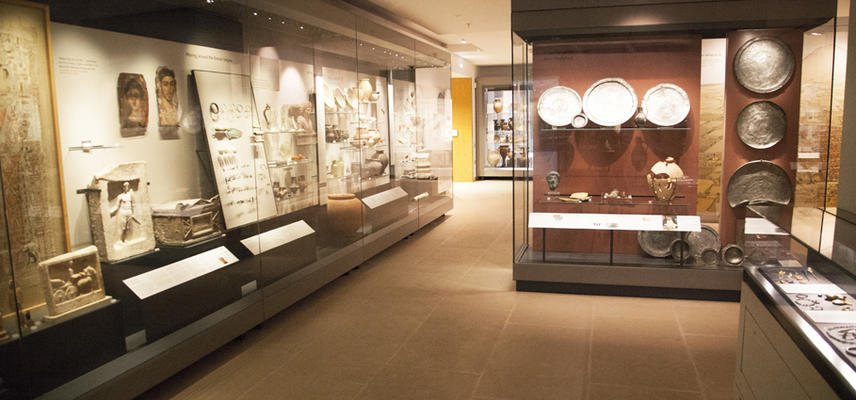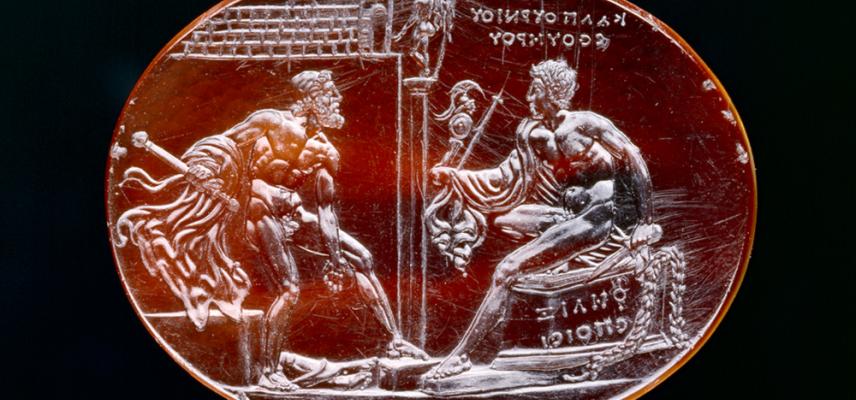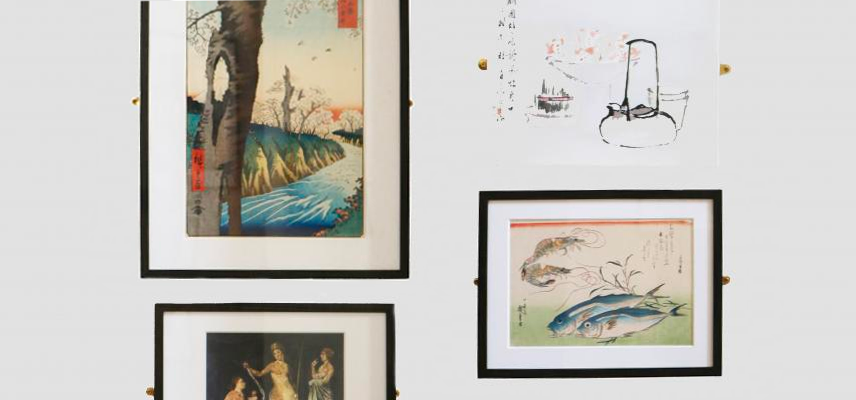THE FELIX GEM
A temple guard is murdered
Intaglios and sealstones are engraved gems that were both worn as decoration and used as a device to make an identifying mark in wax. They are often decorated with subjects of significance to the owner. The scene depicted on this example is the Theft of the Palladion during the Trojan War. A prophesy had revealed that the Greeks could only capture Troy if the cult statue of Athena (known as the Palladion) was in their procession. The hero Diomedes is shown on the right clutching the Palladion but in order to claim it he has killed the temple guard, whose feet are just visible on the ground. The bearded hero Odysseus gestures in horror at this act of sacrilege. The gods were so angered that many Greek warriors were killed before or on their return journey home to Greece.
The Greek inscriptions engraved onto the gem tells us that the original owner was a Roman official named Calpurnius Severus, who may have been a member of the court of the Emperor Tiberius (r. AD 14–37). Inscribed onto the altar beneath Diomedes is the phrase ‘Felix made this’, giving us the name of the gem cutter.
The Felix Gem has been in the possession of many prominent collectors and members of the European nobility. It came to the Ashmolean, however, through its association with Thomas Howard, 2nd Earl of Arundel, who bought the intaglio in the 1630s as part of a gem cabinet costing £10,000.
The Felix Gem
Rome, Italy
c. AD 1–50
Sardonyx
2.65 x 3.5 cm
Purchased with the assistance of the V&A Purchase Grant Fund, 1966
View on our online Collection Online Site: AN1966.1808
License this image - visit the Ashmolean Image Library








